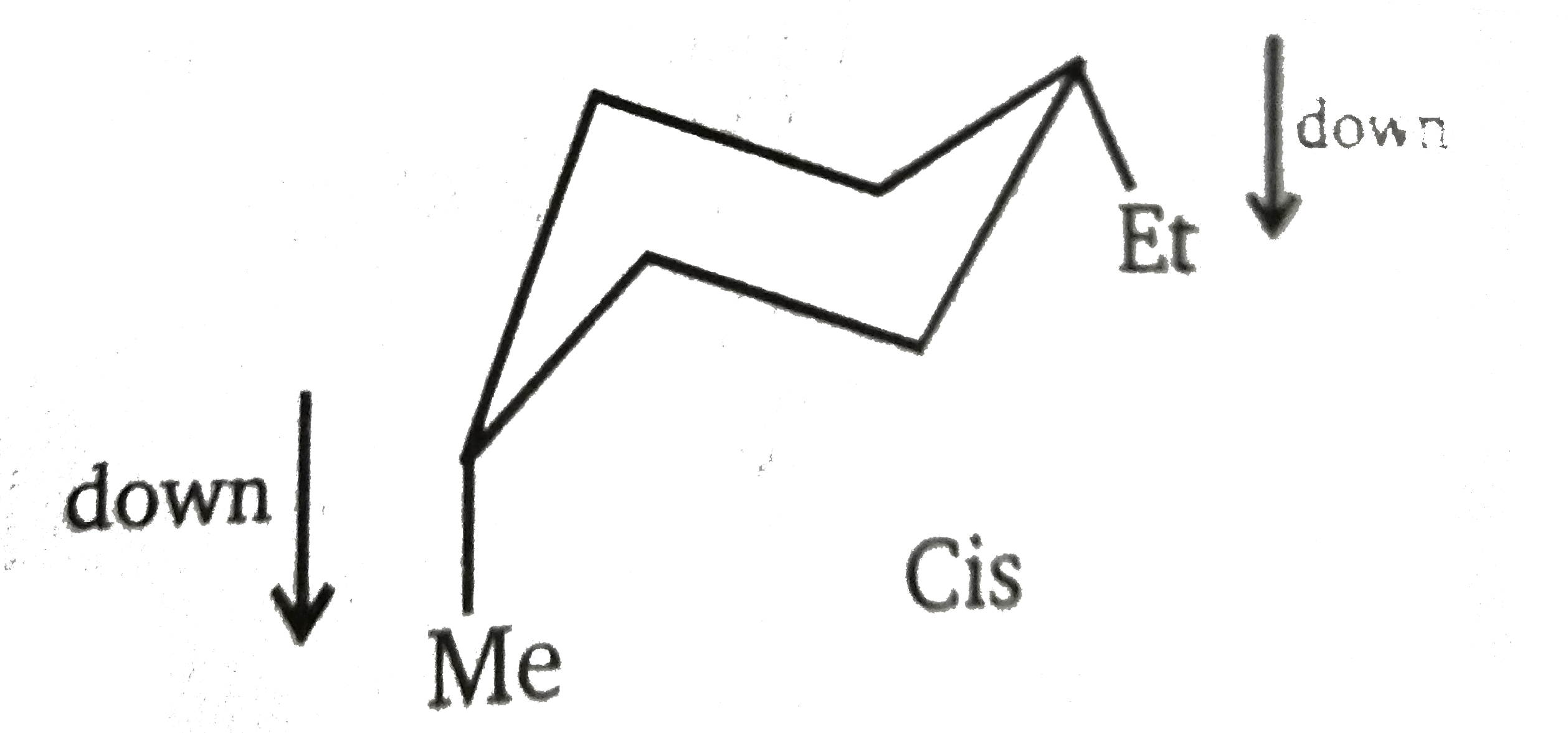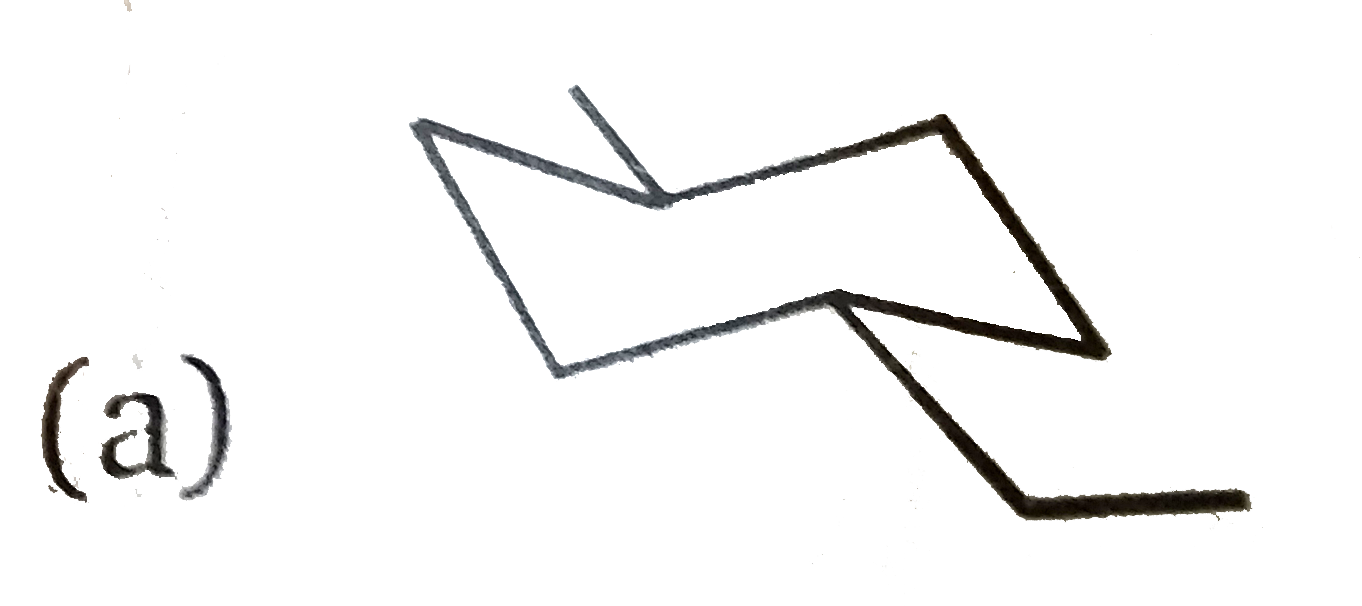Explore topic-wise InterviewSolutions in .
This section includes InterviewSolutions, each offering curated multiple-choice questions to sharpen your knowledge and support exam preparation. Choose a topic below to get started.
| 16651. |
Which of the following is known as Ruby Copper: |
|
Answer» `Cu_2O` |
|
| 16653. |
The uncertainty in the position of an electron (mass =9.1xx10^(-28)g) moving with a velocity of3.0xx10^(4)cms^(-1) accurate up to 0.011% will be |
|
Answer» 1.92 cm `Deltax=h/(4pixxm XX Deltav)` `=(6.6xx10^(-27)("ERGS")XX100)/(4xx3.14xx9.1xx10^(-28)xx3xx10^(4)xx0.011)` `=0.175cm` |
|
| 16654. |
Which of the following is found in cod-liver oil? |
|
Answer» vit-A |
|
| 16655. |
Total number of isomeric acids can be calculate by formula |
|
Answer» `I = 2^(N-1)` |
|
| 16656. |
What are thefunctions of lipidsin livingorganism ? |
|
Answer» Solution :Biological importance of lipids : (i) Lipids are the integral component of CELL membrane. They are necessary of structural INTEGRITY of the cell. (ii) The main function of triglycerides in animals is as an energy reserve. They yield more energy than carbohydrates and proteins. (iii) They act as protective coating in aquatic organisms. (iv) Lipids of connective tissue give protection to internal organs. (v) Lipids help in the absorption and transport of fat soluble VITAMINS. (vi) They are essential for activation of enzymes such as lipases. (vii) Lipids act as emulsifier in fat metabolism. |
|
| 16657. |
Which of the following reagent will not be able to produce acetyl chloride by its reaction with acetic acid? |
|
Answer» `PCl_(5)` |
|
| 16658. |
Which of the following carbohydrates develops blue colour on treatment with iodine solution? |
|
Answer» GLUCOSE |
|
| 16659. |
Which of the following process does not occur at the interface of phases ? |
|
Answer» Crystallization |
|
| 16660. |
When orthoboric acid (H_(3)BO_(3)) is strongly heated, the residue left is |
|
Answer» METABORIC acid |
|
| 16661. |
Which one of the alkali metals, forms only, the normal oxide, M_(2)O on heating in air ? |
|
Answer» Rb |
|
| 16663. |
Write the chemical reaction of carbonyl group with (i) H_(2)O (ii) HCN (iii) Na^(+)HSO_(3)^(-) |
Answer» SOLUTION :
|
|
| 16664. |
What is the sweetness value of sucralose in comparison to sucrose ? |
|
Answer» 160 |
|
| 16665. |
Why can we not determine the order of a reaction by taking into consideration the balanced chemical equation? |
|
Answer» Solution :Balanced chemical often leads to incorrect order or rate. For example the FOLLOWING reaction seems to be tenth orderreaction. `KClO_(3)+6FeSO_(4)+3H_(2)SO_(4) to KCl+3H_(2)O+3Fe_(2)(SO_(4))_(3)` This is actually a second order reaction. The reaction is complex and OCCURS in several steps. The order of such reaction is determined by the SLOWEST step in the reaction mechanism. Order is determined experimentally and observed rate of reaction is DEPENDENT on the concentration of reactants. |
|
| 16666. |
Which of the following silver halide is insoluble in water but soluble in liquid ammonia |
|
Answer» SILVER fluoride |
|
| 16667. |
Which of the statements regarding is incorrect. |
|
Answer» If both alkyl GROUPS are aromatic then peoducts are formed by `SN^(1)` mechanism |
|
| 16668. |
Which type of isomerism is shown by diethyl ether and methyl propyl ether? |
|
Answer» CHAIN |
|
| 16669. |
Which of the following statements are correct for benzoic acid ? |
|
Answer» NITRATION gives o- and - p- nitrobenzoic ACID |
|
| 16670. |
The turbidity of a polymer solution measures |
|
Answer» the light scattered by solution |
|
| 16671. |
Titration of l_(2) produced from 0.1045 g of primary standard KlO_(3) required 30.72 mL of sodium thiosulphate as shown below : lO_(3)^(-) + 5l^(-) + 6H^(+) to 3l_(2) + 3H_(2) Ol_(2) + 2S_(2)O_(3)^(2-) to 2l^(-) + S_(4)O_(6)^(2-) The molarity of sodium thiosulphate ion is : |
|
Answer» `0.079` Mole of `KlO_(3) -= 6 " moles of " S_(2)O_(3)^(2-)` Mole of `KlO_(3)= (0.1045)/(21.4) = 4.88 xx 10^(-4)` Mole `S_(2)O_(3)^(2-) " used " = 4.88 xx 10^(-4) xx 6` ` = 2.93 xx 10^(-3)` ` (M xx 30.72)/1000= 2.93 xx 10^(-3)` ` :. M = 0.095` |
|
| 16672. |
White phosphorous is heated with conc. NaOH in inert atmosphere of CO_2 gives |
| Answer» Answer :C | |
| 16673. |
The second most common element in the universe is : |
|
Answer» Silicon |
|
| 16674. |
Which reaction is not valid |
|
Answer» `HCL + F_(2) to HF + Cl_(2)` `HF + Cl_(2) to F_(2) + HCl` |
|
| 16675. |
Which of the following statement are correct about this pair of geometrical isomer? |
|
Answer» `-I` effect of VINYLIC group on the `-COOH` group is same in both isomers. So there is no role of `-I` on the strength of acidity |
|
| 16676. |
Which ion produces a small crystal field splitting (a weak ligand field) : |
| Answer» Answer :D | |
| 16677. |
Which of the following will exhibit maximum ionic conductivity? |
|
Answer» `K_4[FE(CN)_6]` |
|
| 16678. |
Write the product when D-glucose reacts with conc. HNO_(3) |
|
Answer» Solution :D-glucose on reaction with conc. NITRIC acid gives saccharic acid. `UNDERSET("Saccharic acid ")underset(COOH)underset(|)underset((CHOH)_(4))underset(|)underset(COOH)` |
|
| 16679. |
Write two functions of protein. |
|
Answer» (b) Fats and oils are the greatest ENERGY reservoirs. |
|
| 16680. |
which of the following process is used in the extractive metallurgy of magnesium? |
|
Answer» `I^(-)` USED salt electrolysis |
|
| 16681. |
Which is the most stable chiral from of this compound ? |
|
Answer»
 Cis01,4-disubstituted compound has a e CONFIGURATION so 'Et' group is PRESENT at 'e' and 'Me' at 'a' Cis01,4-disubstituted compound has a e CONFIGURATION so 'Et' group is PRESENT at 'e' and 'Me' at 'a' 
|
|
| 16682. |
What should be the percentage increase in pressure for a 5% decrease in volume of gas at constant temperature ? |
|
Answer» SOLUTION :Given, `P_(1)=P, V_(1)=V, T_(1)=T`, `P_(2) =P_(2), V_(2)=V-(5V)/(100), T_(2)=T` `P_(1)V_(1)=P_(2)V_(2)` `rArr PV=P_(2) (V-(5V)/(100))` `rArr P_(2) =(100)/(95) P=1.0526 P` `THEREFORE" Increase in P "=0.0526 P` `therefore %" increase in P "=0.0526xx100=5.26` |
|
| 16683. |
Which of the following carbonyl compound is most polar ? |
| Answer» Answer :D | |
| 16684. |
The thermal dissociation equilibrium of CaCO_(3)(s) is studied under different conditions. CaCO_(3)(s)hArrCaO(s)+CO_(2)(g) For this equilibrium, the correct statement(s) is (are) |
|
Answer» `DeltaH` is dependent on T |
|
| 16685. |
The well-known mineral fluorite is chemically calcium fluoride. It is known that in one unit cell of this mineral there are 4Ca^(2+) ions and 8F^(-) ions and that Ca^(2+) ions are arranged in a fce lattice. The F^(-) ions fill all the tetrahedral holes in the face-centred cubic lattice of Ca^(2+) ions. The edge of the unit cell is 5.46 xx 10^(-8) cm in length. The density of the solid is 3.18 g cm^(-3). Use this information to calculate Avogadro's number. [Molar mass of CaF_(2) = 78.08 g mol^(-1)] |
|
Answer» Solution :The data provided suggests that the number of molecules per UNIT CELL is 4. `N_(A)=(zxxM)/(a^(3)xxd)` Here `z=4, M=78.08 " g mol"^(-1), a=5.46xx10^(-8)cm, d=3.18gcm^(-3)` SUBSTITUTING the values in the above RELATION, we have `N_(A)=(4xx78.08)/((5.46xx10^(-8))^(3)xx3.18)=(4xx78.08)/((5.46xx10^(-8))^(3)xx3.18)=(4xx78.08)/((5.46)^(3)xx10^(-24)xx3.18)=6.03xx10^(23)` |
|
| 16686. |
The vapour pressure of pure benzene at a certain temperature is 640 mm Hg. A non-volatile solute weighing 2.175 g is added to 39.0 g of benzene. The vapour pressure of solution 600 mm Hg. What is the molar mass of the solute ? |
|
Answer» <P> `M_(A)(C_(6)H_(6))=78" g MOL"^(-1)` ACCORDING to Raoult's Law(solution is ideal or ieal or dilute), `(P_(A)^(@)-P_(S))/P_(S)=n_(B)/n_(A)=W_(B)/M_(B)xxM_(A)/W_(A)` `((200-18=95mm))/(195mm)=((2g))/((M_(B)))xx((78" g mool"^(-1)))/((78g))` `M_(B)=((2g)xx(78" g mol"^(-1)))/((78g))xx((195mm))/((5mm))=78" g mol"^(-1)`. |
|
| 16687. |
Thermal decomposition of which compound yeilds a basic and acidic oxide simultaneously: |
|
Answer» `KClO_3` |
|
| 16688. |
Water rises in a capillary tube to a height of 4.8 cm at 25°C. The density of water at 25°C is 0.9984 g/cc. The same capillary, when filled with mercury, contained 40.5 g/cm of the capillary. Calculate the surface tension of water. Density of Hg = 13.6 g/cc and g = 981 cm s^(-2) |
|
Answer» Solution : Let US first calculate the radius of the capillary tube (R). Wt. of Hg in the capillary = mass of `Hg xx G` `w_(Hg) ="Volume" xx "density" xx g` `w_(Hg) = pir^(2)H xx d xx g` or `(w_(Hg))/h = pir^(2)dg = 40.5 g//cm` `therefore r= sqrt((40.5)/((22//7) xx 13.6 xx 981)) = 0.031 cm` We have, `Y_(H_(2)O) = (hdrg)/2` `=(4.8 xx 0.9984 xx 0.031 xx 981)/2` `=72.86 "DYNE" cm^(-1)` |
|
| 16689. |
Which of the following is nylon salt ? |
|
Answer» `^(-)OOC(CH_2)_4COO^(-)H_3^+N(CH_2)_4N^+H_3` |
|
| 16691. |
When diethyl ether is exposed to excess oxygen, the reaction taken place is ………………… . |
|
Answer» REDUCTION |
|
| 16692. |
What are non-ideal solutions ? Give two characteristics. |
|
Answer» Solution :The solutions which do not OBEY Raoult's law, over the entire range of concentration are called non-ideal solution. (i) There is a charnge in enthalpy when a non-ideal solution formed from their components i.e., `DeltaH_(mix)ne0`. (II) There is a CHANGE in VOLUME when a non-ideal solution formed from their components i.e., `DeltaV_(MAX)ne0`. |
|
| 16693. |
What is the significance of leaching in the extraction of aluminium? |
|
Answer» |
|
| 16694. |
The reagent used for the conversion of phenol into salicylaldehyde is ………………….. . |
|
Answer» `CHCl_3//NaOH` |
|
| 16695. |
What are the conditions of pressure and temperature under which solubility of carbon dioxide in water can be increased? |
| Answer» SOLUTION :To increase the solibility of carbon DIOXIDE in water HIGH pressure, low TEMPERATURE is FAVOURABLE. | |
| 16696. |
Write the IUPAC name of CH_(3)COCH_(2) CH_(2)CH_(3). |
| Answer» SOLUTION :PENTAN - 2 - ONE (or) 2 - PENTANONE | |
| 16697. |
The solublity of I_2 in KI solution is more than its solubility in pure water because |
|
Answer» `I_2` dissociates in WATER |
|
| 16698. |
The speifciassociationof the two chains of the doublehelxin in DNA is known as ……….. . |
| Answer» SOLUTION :COMPLEMENTARY BASE PAIRING | |
| 16699. |
Which acts as inhibitor for knocking in combustion of petrol ? |
|
Answer» `(C_2H_5)_4Pb` |
|
| 16700. |
Which of the oxide shows appearence like metallic copper? |
|
Answer» `ReO_3` |
|



